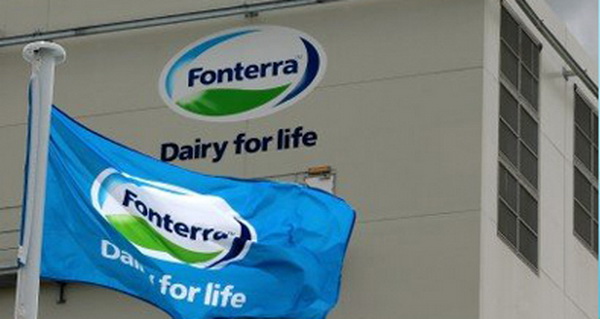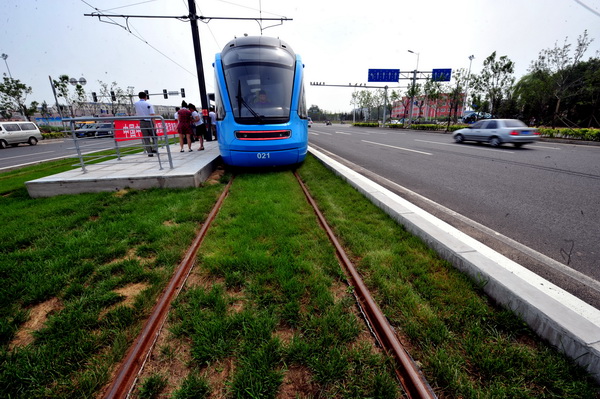

Highlights from the EO print edition, No. 632, Aug 12, 2013

Contamination Scandal Hits Dairy Giant Fonterra
News, page 1
~ The New Zealand dairy giang Fonterra has received a serious blow to its reputation after the revelation that 38 tonnes of a particular type of whey protein concentrate called WPC80 was contaminated with a bacteria that can lead to botulism.
~ Chinese consumers have flocked to foreign dairy brands in recent years because of a toxic milk powder scandal that rocked domestic companies in 2008. Since the signing of a free trade agreement between China and New Zealand in 2008, trade between the two countries has increased dramatically and made China Fonterra's largest market.
~ Wang Dingmian (王丁棉) from the Dairy Association of China (中国奶业协会) says that 70 percent of China's imported milk powder is from New Zealand, and of that, 80 percent is produced by Fonterra.
~ However, since last year, two food safety incidents have put Fonterra's reputation on the line. In September 2012, Fonterra found residue of dicyandiamide (DCD) in its milk and milk powder. Yet it wasn't until Jan 24, 2013 that the New Zealand Ministry for Primary Industries (MPI) announced the discovery. In response to the scandal, Fonterra reassured the consumers that its dairy products are safe because only "minute traces" of DCD were found.
~ Then in March of 2013, Fonterra discovered microorganisms of clostridium in its whey protein, which is a key ingredient in baby formula and sports drinks. On July 31, Fonterra confirmed the existence of toxic clostridium botulinum in one of its samples. But between March and July, tainted batches had already been sold all over the world.
~ On Aug 5, New Zealand Prime Minister John Key questioned Fonterra's decision to wait several months after discovering heightened levels of bacteria that indicated that there might have been a contamination before announcing it. Fonterra CEO Theo Spierings said that it takes time to find the source of the contamination and that they had sent immediate notices to clients and the government within 24 hours of confirming the contamination.
Original article: [Chinese]

Toxic Threads: What China is Doing About Chemicals in Clothing Production
News, page 4
~ Major international apparel brands such as Armani, Nike, Adidas and Li Ning were all said to have sourced clothes from Chinese suppliers that use Nonylphenol Ethoxylates (NPEs) in their production process, according to a report titled "Dirty Laundry" released by Greenpeace in 2011. NPEs can breakdown into hormone-changing chemicals when clothes containing traces of the chemical are washed,
~ Prior to making the results of its 2011 report public, Greenpeace sent e-mails to 15 well-known apparel brands in China, informing them that tests showed that two of their suppliers in China had been releasing waste materials that contained Nonylphenol (NP), which can break down in the environment to form hormone-disrupting chemicals. Of the 15 companies, seven have agreed to "detoxify" their products, though Li Ning was the only Chinese company to take the pledge.
~ The use of NP and NPEs in production is already restricted within the European Union, though businesses have continued to produce the chemical for export to countries where the legal restrictions are not as strict, such as China. It is not against the law to buy or use nonylphenol in China and there are no restrictions on the export of clothing containing nonylphenol. Apart from imports, China produces 47,000 tonnes of NPE a year, with more than 50,000 textile factories in China requiring the chemical for cleaning, printing and dyeing process.
~ NPEs were also once commonly used in household laundry detergents. However, environmental regulators and detergent manufacturers have cooperated to eliminate this use. However, NPEs are still widely used in large quantities in industrial laundry detergents.
~ A foreign-invested corporation in Guangdong recently applied to the Ministry of Environmental Protection (MEP) for permission to purchase 10,000 tonnes of Nonylphenol Ethoxylate, the MEP allowed them to purchase 9,600 tonnes of the chemical.
~ Last year, a second Greenpeace report revealed that 63 percent of 141 items tested contained Nonylphenol Ethoxylate, including items from apparel giants Zara and H&M. Of the nine products tested from Italian brand Armani, 5 were found to contain traces of NPE.
~ So far, China does not have a hazardous chemicals list and has not issued an official request for industries to remove nonylphenol from their manufacturing processes.
~ "Central authorities and local governments are very focused on environmental issues, but this is a supervision problem, a technical problem and a money problem," an anonymous industry insider said.
~ "Their (Greenpeace) reports have the effect of encouraging us," said Zhang Huailiang (张怀良), honorary chairman of China National Textile and Apparel Council (中国纺织工业协会), "but they're not going to decide how we act. We receive some of their views with a critical eye. In general we welcome the report, but not blindly."
~ China's Ministry of Environmental Protection did not establish a chemical management office until 2009 and did not pass its first hazardous chemical management regulations until Oct 2012. In the beginning of this year, China finally introduced its first hazardous chemicals environmental protection plan.
Original article: [Chinese]

"Pickle Index" Informing Authors of China's Grand Urbanization Plan
News, page 3
~ A "Pickle Index" (榨菜指数) is helping officials from the National Development and Reform Commission (NDRC), China's top economic planning agency, track movements among China's large migrant worker population and fashion a grand plan for pushing ahead with urbanization over the coming years. Based on the popularity of zhacai (榨菜) - a Chinese pickled vegetable - among the hundreds of millions of rural residents who travel to urban areas to work in low-paid manual jobs for a period, officials are using changing sales figures for the condiment across various regions of the country to help inform them of shifting trends in the movement of these migrant workers.
~ As sales of zhacai and instant noodles are usually not effected by rising incomes, most of the changes to the sales of these items in urban areas is usually related to a change in the number of migrant workers living in the region. For instance, the sales of zhacai in southern China as a proportion of total sales around the country declined over the four year period from 2007 to 2011, falling from almost half of all zhacai sales in 2007 to less than 30 percent in 2011. According to officials with the NDRC's Planning Office, this is an indication that the number of migrant workers in southern China is decreasing.
~ Over the same period, pickled vegetable sales in northern China, northwest and central China have all increased by over 50 percent, an indication that the number of migrant workers are increasing in these areas, which is also backed up by data from the National Bureau of Statistics.
~ A certain amount, though not a large share, of migrant workers are also said to have left southern China and returned to central and western areas of the country, to provinces such as Sichuan and Henan.
~ Economic planners are about to publish a plan that outlines the goals of China's urbanization policy out to 2020. Part of the plan is to lift the provision of social services such as health care and education to migrant workers that stay in one place for longer than six months. This will no doubt put more pressure on local governments to meet the costs of these programs and many provincial governments are asking central authorities to provide more support.
~ It's in this context that it becomes important to be able get a sense of population trends among migrant workers. Thus the "pickle index" is playing a role in influencing policy decisions.
Original article: [Chinese]

China's Grand Tram Plans
News, page 3
~ Trams are expected to be added to a list of major national planning projects in China. According to transportation system planning, by 2020 the total investment in tramways could reach 300 billion yuan.
~ Currently, the transport system in most of China's cities adopts the model of "bus + subway". With the expansion of cities, probelms such as pollution, traffic congestion and other planning challenges have been revealed in many cities. Some are now suggesting that Chinese cities turn to light rail and trams to relieve many of these problems.
~ "The investment for tram for per kilometer is 800 million yuan and its transportation capacity at highest could reach 15,000 people per hour at rush hour, explained Bao Xuding (包叙定), head of China Association of Metros (中国城市轨道交通协会). "The construction period is one to two years."
~ Currently, 26 mid- and large-sized cities have already begun to draw up plans to develop tram lines.
~ However, the roll out of tram lines across the country still faces many challenges and there is no overall plan or national standard in place to help guide development.
Original article: [Chinese]
Search Engines to Compensate Users for Deception in Search Results
Corporation, page 31
~ On Aug 8, two competing Chinese search engines, Baidu and Qihu, launched new compensation schemes in hopes of gaining larger market share. The schemes both assure users that if they suffer financial losses because search results directed them to fake or deceiving websites, the companies will pay full compensation provided the user provides "sufficient evidence".
~ Since the launch of the scheme, Qihu has received 378 reported cases of deception and has paid compensation on 202 of them. The highest amount awarded was 260,000 yuan.
~ Yu Guangdong (于光东), the Vice-President of Qihu, said that in order to compete with the leading Chinese search engine Baidu, Qihu is willing to undertake the financial risks associated with the scheme and sacrifice income from advertisements in order to improve the quality of search results.
Original article: [Chinese]
Heat Wave Hampers Tourism and Tea Industries
News, page 1
~ On Aug 9, Shanghai’s temperature surpassed 40℃ for three consecutive days. Ordinarily, August is one of the busiest times for tourism in Shanghai, but the extremely hot weather this year has changed this pattern.
~ Shanghai Tourism Bureau statistics show that since the first extremely hot day in June, the total number of tourists has decreased 11.30 percent compared to the same period last year. Meanwhile, the number of people leaving Shanghai to travel has increased 65 percent compared to last year.
~ Even if the heat wave’s impact on tourism is temporary, its impact on agriculture is expected to be much longer. In Hangzhou, high temperatures have caused half of the local tea plantations to see tea trees wither or die.
~ Shan Jiannong (商建农), head of the Hangzhou West Lake District Longjing Tea Industry Association, said that hot weather and a drought that have lasted more than a month have damaged tea trees greatly. Next year the output of spring tea will inevitably be reduced. By conservative estimates, production will fall 20-30 percent, with the impact on tea leaves lasting at least three years.
Original article: [Chinese]

